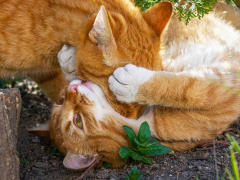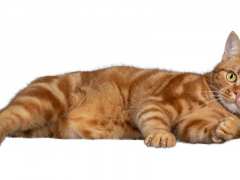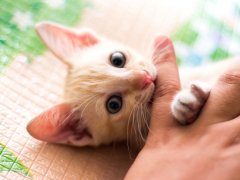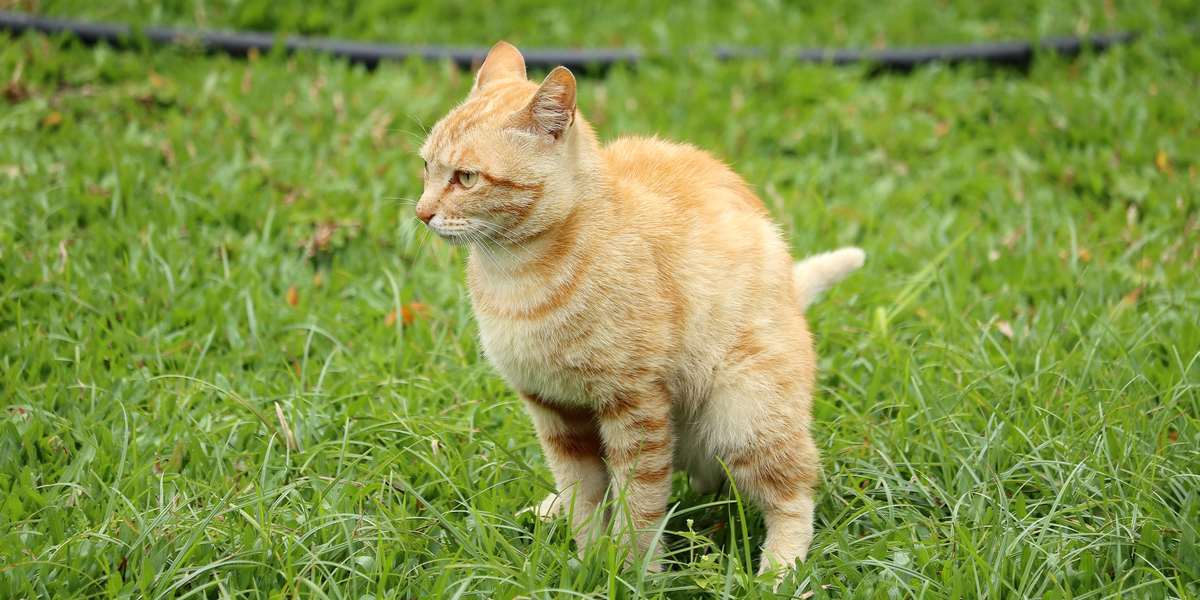
Have you ever come home to find your cat’s poop exposed, unsightly, and smelly? Let’s get the inside scoop about your cat’s uncovered poop!
Feces in Communication
Instinctively cats deposit urine and feces through elimination in quiet, secluded spots where disturbance is minimal. Defecation is the technique your cat uses to eliminate solid wastes, although some cats use defecation as a form of communication through pheromones and odours.
Chemicals from feces amongst carnivore species can give information about the depositor sex, reproductive status, health condition, transitory movements and behaviors.
Unfortunately, the precise communicative chemical function of feces in cats isn’t known, like urine, it probably conveys a variety of messages in an array of circumstances. Underlined functions across a range of animals comprise of territoriality, personal defense, group recognition, and stress communication.
Why Doesn’t My Cat Bury or Cover Her Poop?
A cat may or might not turn to smell or hide elimination based on surface preference, site usage, potential health issues and social interactions.
Let’s investigate hypotheses of why certain cats decline to cover their poop:
Possible Medical Issues
When a cat suddenly changes their daily excrement habits, it should prompt our attention to check their restroom patterns and beyond for other symptoms.
Declawing, discomfort from being constipated or pain during defecation can intensify the necessity to leap out of the tray when a cat is experiencing gastrointestinal disorders or maybe Feline Lower Urinary Tract Disease (FLUTD).
Defecation posturing difficulties may be caused by movement and neuromuscular disorders, while adverse reactions to medication together with parasites can exaggerate bolting, all warranting a medical check-up.
Early Experiences
Orphaned or outdoor kittens who haven’t been trained by their mum may never hide their stool unless taught by their pet owners a way to conceal fecal excreta during kittenhood.
Litter Box Dissatisfaction
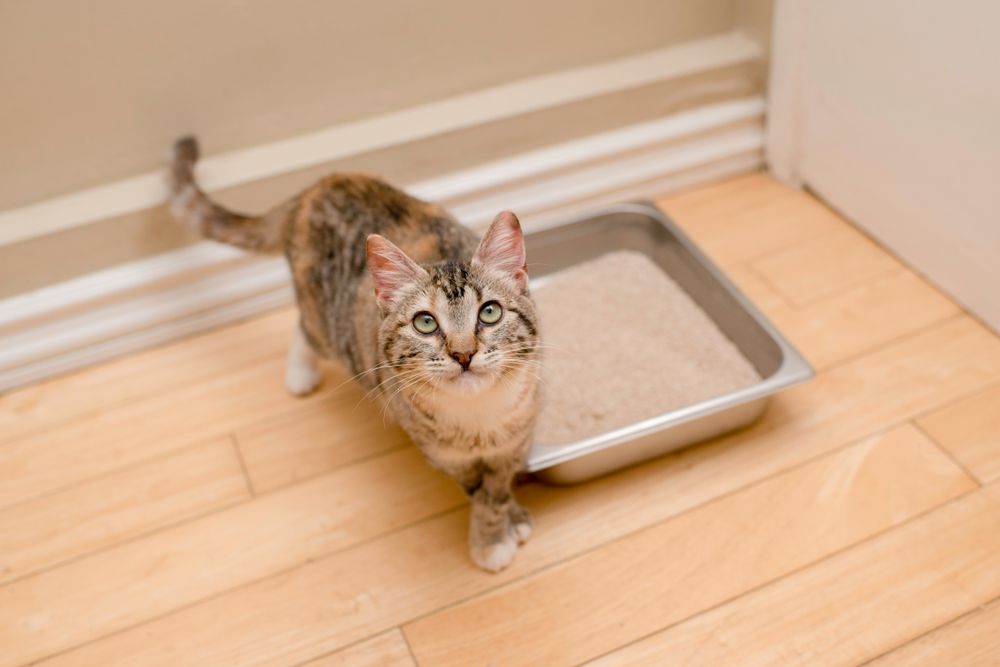
Chemicals from feces amongst carnivore species can give information about the depositor sex, reproductive status, health condition, transitory movements and behaviors.
Frequency of secretion burial could also be linked to litter box dislike, unfavourable substrate and undesirable litter tray size; cats need sizable potties to be able to turn comfortably prior and post evacuation.
A study investigating cat elimination behavior in both enriched and in-clinic environment found that within the clinic setting, where cats didn’t have sufficient litter substrate to prepare or cover their waste post elimination, redirected pawing behavior to any available surface just like the floor or wall nearby.
These observations were related to latrine dissatisfaction noted by Cottam and Dodman (2007). Anecdotally, owners who use hooded trays often complain about ‘box banging’ behavior where cats repetitively paw at the side of the tray, thus it’s suspected that inability to cover may elicit frustration (FrançoisMartin, 2017)
Territorial Declaration
It’s hypothesized that covering behavior arose in wild free-roaming felids as a protective mechanism to cut back pathogens exposure and forestall predators or unfamiliar cats from detecting the cat’s presence (faecal odour) and keeping it safe.
Domestication has changed several genetic factors of this behavior; therefore, certain indoor cats don’t bury their feces in their core area.
Household Social Tensions
Cats living in multi-species homes may perceive the latrine facilities as unsafe if there’s a dog or additional moggie in the vicinity while the cat attempts to defecate which can cause a quick getaway or maybe future avoidance.
An owner touching or trying to catch a cat to offer medication while it’s within the tray can cause a nasty association and take off.
Swift fleeing may additionally occur when restroom facilities are positioned in high human traffic areas like hallways causing the cat to feel startled and vulnerable.
Senior Cats
Aging is a natural process accompanied by several behavioral and physical changes like cognitive decline and Degenerative Joint Disease which can impact on litter box access, usage and poop coverage, especially if a geriatric pet must climb stairs or jump to get inside a tall privy.
How To Get Your Cat To Cover Their Poop?
Kitten Training
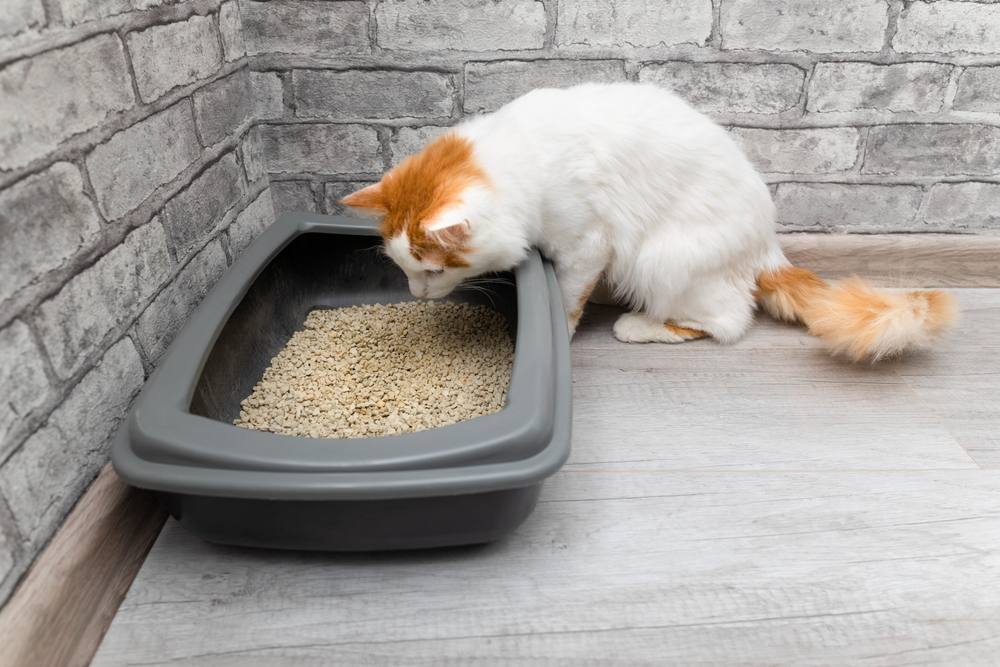
Now that we know why your cat may not be covering their poop, let’s talk about how to correct the problem.
Some kittens don’t intuitively understand how to use the litter tray or the way to bury their excrement. A kitten that’s reluctant will need our encouragement to mask their droppings by mimicking the queen’s behavior. Clicker training by creating a positive association also can do the trick. Find out how to litter train a kitten by following this step-by-step guide.
Optimise Litter Facilities
The greatest way to establish optimal latrine facilities and the substrate is to supply multiple choices and offer an adequate number of large trays distributed in separate locations.
Eating and defection activities shouldn’t be disbursed within the same location, humans rarely consume food and eliminate it within the toilet, same applies to cats.
Lavatory facilities should be positioned away from glass windows, washing machines, and thoroughfares including entry/exit points as potentially perceived as a safety issue that can urge your cat to sprint without proper concealment.
Offer numerous boxes with low edges for cats with Hip Dysplasia, Arthritis and mobility disorders.
Also Read: Best Litter Boxes
Minimise Stress and Conflicts
Restroom and stairwell guarding is common in multi-cat households from diverse social groups. Ensure all felines can obtain immediate and free access to numerous boxes on different floors without the danger of encountering another kitty or getting blocked.
Sufficient separate resources should be provided for every cat in discrete locations where cats can avoid each other if they choose to.
Provide lots of escape routes in multi-species homes, like cat walkways, catios, and tall cat condos. Reduce stress by letting your cat dictate the quantity and quality of daily interaction.
Avoid medical interventions and punishment next to toilet amenities.
Conclusion
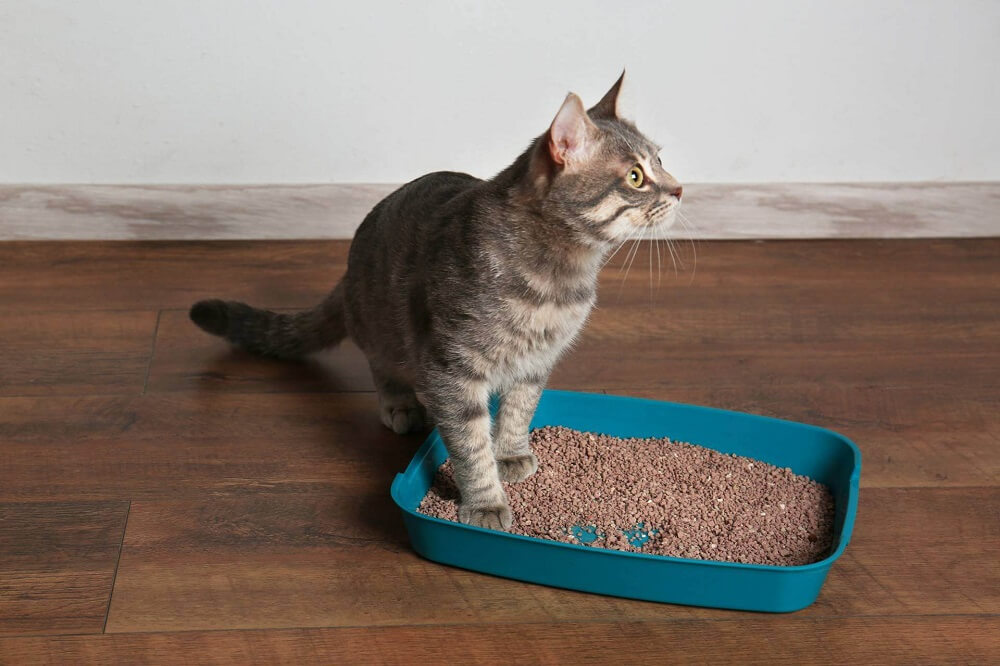
Eating and defection activities shouldn’t be disbursed within the same location, humans rarely consume food and eliminate it within the toilet, same applies to cats.
Covered or exposed stool is a normal behavior for a domestic feline, so don’t stress about it unless your cat eliminates outside the latrine, is straining to formulate bowel movement, or there’s blood in their dropping which necessitates a vet visit.
-
Beaver, B. V. (2003). Feline Eliminative Behavior. In Feline Behavior A Guide for Veterinarians (p. Chapter 8). USA: Elsevier Science Inc. Retrieved March 29, 2021
-
FrançoisMartin, R. T. (2017, September ). The ins and outs of the litter box: A detailed ethogram of cat elimination behavior in two contrasting environments. Applied Animal Behaviour Science, 194, 67-78. Retrieved March 27, 2021, from https://www.sciencedirect.com/science/article/pii/S016815911730151X?via%3Dihub
-
Heath, S. (2019). COMMON FELINE PROBLEM BEHAVIOURS Unacceptable indoor elimination. Journal of Feline Medicine and Surgery, 21, 199–208. Retrieved March 26, 2021, from https://journals.sagepub.com/doi/abs/10.1177/1098612X19831202
-
Miyabi Nakabayashi, R. Y. (2012, May). Do faecal odours enable domestic cats (Felis catus) to distinguish familiarity of the donors? Journal of Ethology, 30:325–329. Retrieved March 28, 2021, from https://www.researchgate.net/publication/257486163_Do_faecal_odours_enable_domestic_cats_Felis_catus_to_distinguish_familiarity_of_the_donors
-
Sparkes, D. S. (2016). ISFM Guide to Feline Stress and Health; Managing negative emotions to improve feline health and wellbeing. Tisbury, Wiltshire, UK: International Cat Care. Retrieved March 23, 2021
-
Care, I. C. (2020, September 01). Feline Senses and Communication. Advanced Feline Behaviour Course for Vet Professionals. United Kingdom: International Cat Care. Retrieved March 22, 2021

